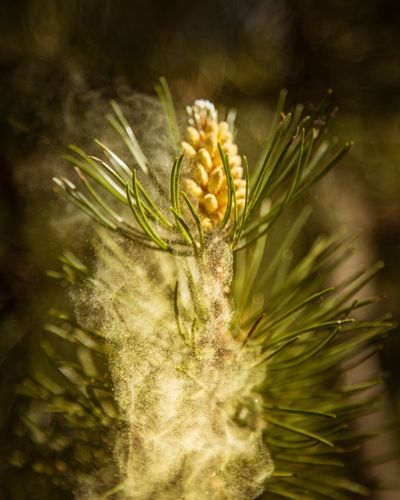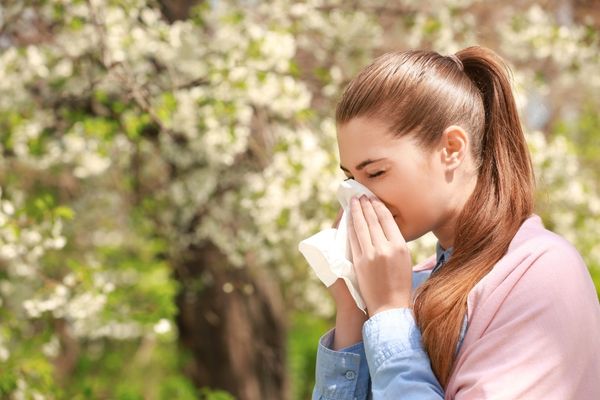Your Cart
-
${ item.product_title }$ ${item.price}

JAPANESE AGRICULTURAL STANDARDS

PATENTED PRESERVATION PROCESS

1 YEAR PLUS FERMENTATION PROCESS

NON GMO ORGANIC
FIGHTING ALLERGIES WITH BEE POLLEN
Many of us are no strangers to allergies. This occurs when our immune system overreacts to an allergen, like, for example, pollen. The two types of allergies are seasonal and perennial. Seasonal allergies are also called hay fever, usually occurring during the spring and fall seasons in response to outdoor allergens like pollen. Pollen comes from flowering plants and is responsible for plant reproduction.
Pollen comes in a fine-dust form and is transported from one plant to another by insects and wind. Perennial allergies are those that occur year-round, typically in response to indoor allergens like chemicals, dust mites, and pet dander. Food allergies are also common, coming from a wide variety of foods, including nuts, milk, soy, shellfish, and many others.


WHAT IS BEE POLLEN?
Environmental changes are found to be causing the rapid rise in allergies globally. In the US alone, food allergies in children have increased by 50% from 1997 to 2011, fueling the billion-dollar market for antihistamines and allergy treatments.
A 2017 study found that environmental factors such as changes in residential, food, health, sanitation, and water/soil/atmospheric environments contribute to the exacerbation of allergies in Japan. It was found that the root of each of these changes is an increase in chemical substances like diesel exhaust particles (DEPs), which we city dwellers are often exposed to.


The probability of having allergy attacks is now even higher with more factors that can both trigger and aggravate our allergies. Luckily, there are natural ways to help us fight against these attacks. Bee pollen is considered one of nature’s most complete foods, containing 55 vitamins and minerals, nutrients, amino acids, lipids, and over 250 active substances.
Bee pollen is created when bees go from flower to flower collecting pollen to bring back to the hive, where they create the granules. Not to be confused with other bee products like honey and honeycomb, bee pollen is a mixture of flower pollen, nectar, enzymes, honey, wax, and bee secretions. These are collected by bees and brought to the beehive, where they are stored and consumed by the colony.
QUICKLY ABSORB (UP TO 90%) OF THE MEGA NUTRIENTS
Bee pollen is recognized as a natural medicine with a wide range of health benefits, such as antioxidants, fertility medicine, liver protection, immunity boosters, and many others. Bee pollen is easier to absorb by the body when fermented. The product, Bio Bee Pollen, by Koso Med, is fermented with 52 strains of friendly soil bacteria. The fermentation process extracts the naturally derived active enzymes, amino acids, vitamins, minerals, antioxidants, and probiotics; it allows for 90% absorption by our bodies. Fermentation also acts to pre-digest the content of food, allowing you to absorb it much easier and faster.

Bio Bee Pollen is a natural alternative to over-the-counter allergy relief medicines. When the body recognizes an allergen, the immune system reacts by releasing histamine and other chemicals into the bloodstream, which produce the symptoms of an allergic reaction. Bio Bee Pollen works by reducing the release of histamine, which prevents allergic symptoms and other issues from happening. Bee pollen stimulates the immune system to produce antibodies that combat these allergic reactions, which are different for everyone.
Bee pollen is easy and safe to incorporate into our diets. As fermented bee pollen, Bio Bee Pollen offers the natural goodness of bee pollen in a bottle, providing more antioxidants. Not only will Bio Bee Pollen alleviate your allergies, it will also improve fertility, oxygen-rich red blood cells, aid respiratory and breathing cycles, making it a holistic, natural remedy to allergies, and more!
References:
https://www.ncbi.nlm.nih.gov/pmc/articles/PMC5545671/pdf/tox-30-193.pdf
https://www.cnbc.com/2016/09/09/allergies-are-on-the-rise-and-here-are-three-reasons-why.html
https://www.healthline.com/nutrition/bee-pollen#TOC_TITLE_HDR_12
https://www.healthline.com/health/allergies/seasonal-allergies#causes